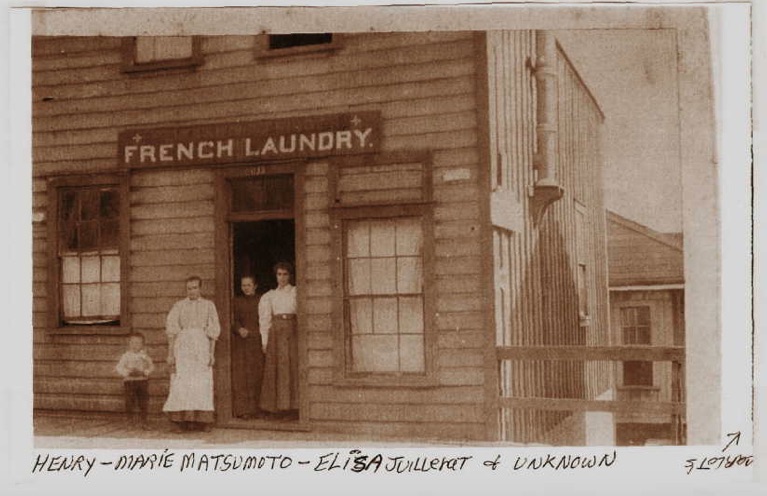Tacoma’s Historic Japantown: An Overview
I. Origins

Although the Issei did not use the word “Nihonmachi” (Japantown) to refer to their enclave until 1915, Japanese have lived in Tacoma for considerably more than one hundred years. Japanese newcomers first arrived in the late 1880s, and soon began opening businesses in the city. It’s unclear if the first Japanese business was a curio store on Railroad (now Commerce) Avenue, or a grocery store and restaurant. Soon afterward, several Japanese-owned cafes and restaurants opened. Businesses grew up in a concentrated area with barbershops, laundries, restaurants, import shops, produce vendors, and hotels. Japanese residents were wary of the “Tacoma method,” which Tacoma residents had used to forcibly expel Chinese settlers just a few years earlier, and so they did not settle in the waterfront area formerly occupied by the Chinese.
Many Japanese men arrived as railroad workers, mill workers, or farm workers. Land laws in Japan prevented second and third sons from inheriting family estates, so many of these settlers came to seek their fortunes in the United States. Although some men arranged marriages to “picture brides,” a number of Issei bachelors were able to travel back to Japan to participate in their marriage arrangements. After the U.S. and Japanese governments worked out the so-called “Gentlemen’s Agreement” in 1907 and 1908, the Japanese placed limits on migration that prevented anyone other than parents, wives, and children of men already in the United States from emigrating to the U.S.
Eventually the settlers in Tacoma, as in several other major West Coast cities, created a vibrant community known as Nihonmachi. Though alien land laws and racially restrictive covenants prevented Japanese immigrants from owning land or property, some were able to make other arrangements. Some bought property in their children’s names, since the children were American citizens, while others were able to lease property or land from Caucasians.
*Text from Tamiko Nimura, “Tacoma Neighborhoods: Japantown (Nihonmachi)—Thumbnail History,” HistoryLink.org, 2016. Sources for this overview are listed with the article on HistoryLink.
Photo credit:
c. 1895. Matsumoto family at the “Fine French Laundry” at 1133 South C Court, Tacoma. (Courtesy of Kim LeRoy, descendant of Matsumoto family.)